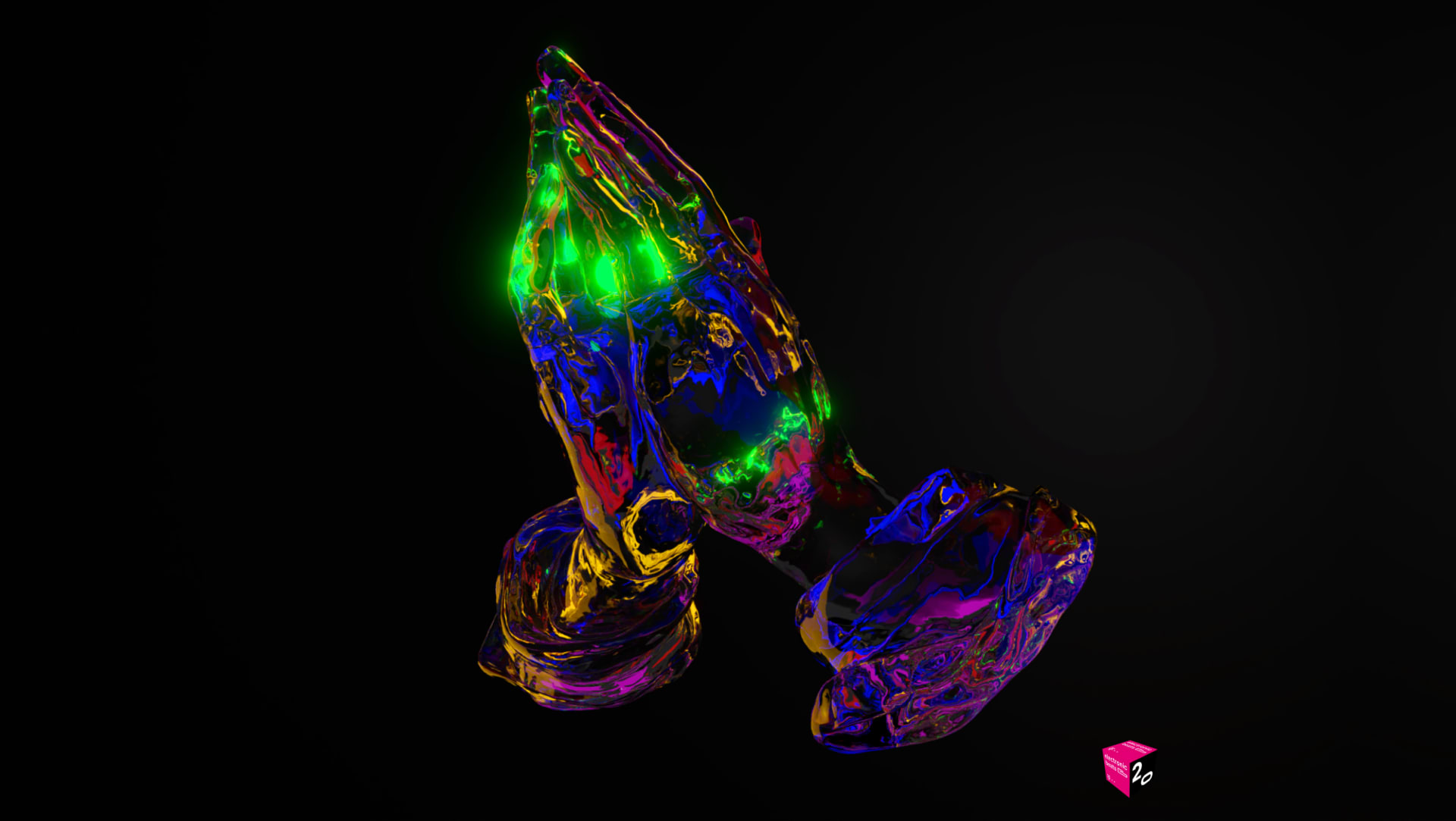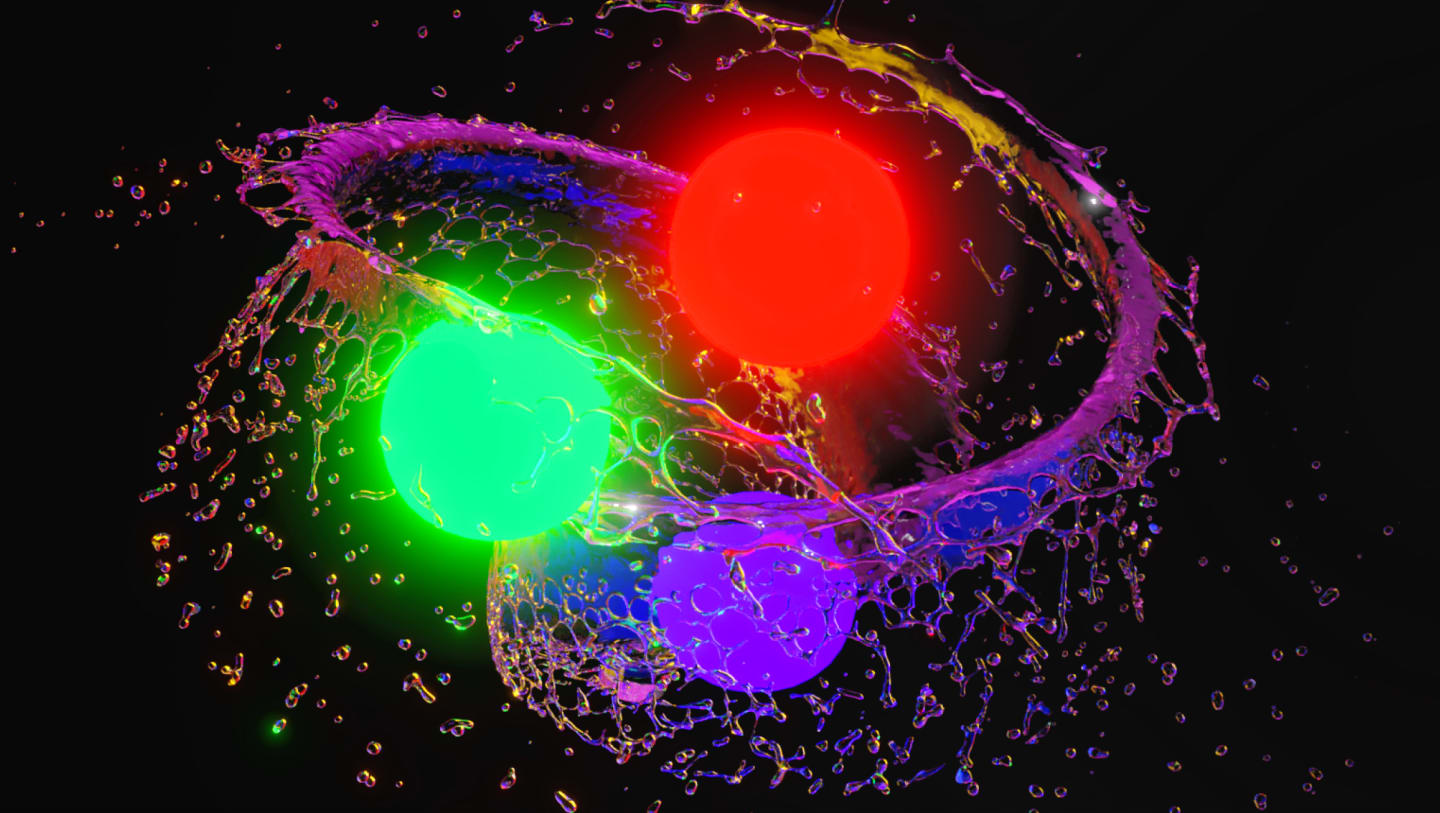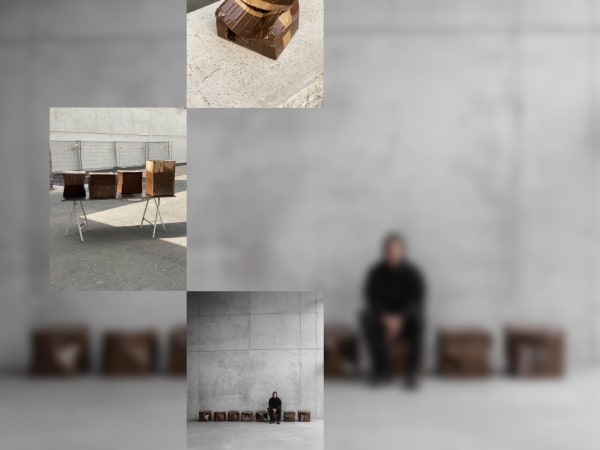

The Dancefloor as the New Religious Congregation
Suffering and salvation are the conditions of nightlife devotion
The following is an excerpt from the full-length essay “The Making of the Modern Church: The Dancefloor as the New Religious Congregation,” which is featured in German in the Electronic Beats 20 year book. Pre-order the book here.
Every Sunday, when Tianna Strickland got off the Warschauer Straße S-bahn stop and walked towards Berghain, her heart would twist in anxiety. Her most immediate memories of embarking towards the club were during the winter of late 2019, when her black down jacket brushed against her calves as she crunched through the rubble of the adjacent Comeniusplatz park and the grey, funeral sky looming above almost perfectly matched Berghain’s concrete edifice. Half of the anticipation came from the question of getting in; the other, came from being, as she puts it, “so excited to rip everything off and just fucking dance.”
To Strickland, going to the club and going to church feel one and the same. “It’s the act of getting dressed up to go out in the morning,” she describes, of her own “Sunday best,” consisting of towering, laced-up platforms, brown Fenty lipstick, and a black tattoo plastic choker. “It’s so parallel for me because that’s what we’d do [when I was a child] with my grandparents in Alabama. My grandma would wake us up and put me and my cousin in matching outfits, so she could bring us to church.” Her Berghain visits often remind her of a practice in Pentecostal Christianity known as Slain in the Spirit where “people fully let themselves go and experience the holy ghost” by speaking in tongues and rolling around on the ground. “People [in the club],” she attests, “are experiencing outer body sensations; people are experiencing pleasure on so many levels.”
...going to the club and going to church feel one and the same.
Strickland, who is 30 years old and American, sports a closely-shaved head of hair that she dyes a new color about every three weeks—from turquoise to lilac to white blonde—like a semi-permanent mood ring. Between her hair and her gregarious disposition, she’s an immediately recognizable figure on the dancefloor. Her role in the local nightlife scene, which began about two years ago when she moved to the city, was once described to me by a mutual friend as “the underground national treasure.” Strickland has been a thrill-seeker since her New York party days in the mid-2010s, frequenting such now-defunct heritage venues as Palisades, Output, and Silent Barn. By her own definition, she’s someone who is “really out here.” But this dedication to the club took an abrupt turn when the novel coronavirus hit Berlin in February of 2020.
By March, the virus had effectively ruptured an entire culture that so many, including Strickland, held dear. The electronic music model—an industry contingent on almost every element that would aid the virus’ proliferation: live events, touring artists, mass attendance, and the insufflation of shared illicits—effectively broke. Club owners, DJs, and party promotors alike found their already tenuous financial planning veer into a shadowy unknown. When would the virus go away? And, when it did, how would the industry recover from the pandemic’s steep fallout? As of now, these existential questions still persist as club events in enclosed spaces remain on indefinite hiatus. But the murder of George Floyd, sparking a seismic political shift via the Black Lives Matter resurgence throughout early summer, ushered in a heightened state of global unrest that also reverberated throughout the local community. In spite of threats of infection, citizens from Brisbane to Los Angeles donned their masks to participate in a united protest movement against systemic racism in their respective countries. On Saturday, June 6th, over 15,000 Berliners gathered in solidarity for a “Nein zu Rassismus” or “No to racism” rally in Alexanderplatz. It’s no coincidence that, simultaneous to the occurrence of these large-scale demonstrations, open air raves began popping up with weekend-in, weekend-out regularity across Berlin.
Throughout the months of July and August, private organizers disseminated logistical details of en plein air events in Schönefeld, Marzahn, and southern Neukölln using Telegram, the same messaging platform shared by most of Berlin’s drug dealing network, to hundreds of eager strangers who would journey over an hour to gather at remote forests and desolate lakes. Almost overnight, the trend of socially-distanced parties hosted on streaming platform United We Stream and the video conferencing tool Zoom lost their appeal. This swift liberation from Germany’s lockdown behaviors following the Black Lives Matter protests points to two overlapping explanations: 1) The country’s widely-publicized success in containing coronavirus lowered citizen’s inhibitions towards public assemblies especially considering that there were no considerable spikes in diagnoses following the series of city-wide protests 2) Citizens, who were reeling from the trauma imposed by weeks of quarantine and who became ignited by the unjust death of George Floyd, rediscovered the necessity for collective emotional catharsis—divorced from the lifeless glow of a digital screen—when they took to the streets.

Strickland, and her milieu of gung-ho partygoers, embody a kind of dogged and impetuous tenacity for communal events that even a worldwide pandemic could not deter. At the anti-racism protest at Alexanderplatz, Strickland, who is Black, pushed her way to the front-right of the stage and cried into her shirt during the eight-minute-and-forty-six-second moment of silence, as she raised her clenched fist up to the sky in a signal of Black power. When asked about the risks of raving during such an unprecedented time, she puts it simply, “I need it for my soul. I need it for my being. I need for it for my sanity. It’s not something that I can just fill with anything else.”
Despite the continuous scroll of social media and online entertainment, for Strickland and others, there is no replacement for physical parties. As far back as March, when Germany’s lockdown restrictions were first established, there were whispers of highly illegal and exclusive loft parties for specifically gay clientele and, even in August, as new coronavirus diagnoses spiked back up to around 1,000 new cases per day, open-air raves where unmasked partygoers dancing in shoulder-to-shoulder proximity raged onward. Every weekend, these attendees risked their lives and the lives of others to seek this communion. Why was this?
In author and music journalist Simon Reynold’s 1998 book Generation Ecstasy: Into the World of Techno and Rave Culture, he touches briefly upon the spirituality interwoven into the fabric of dance music. As far back as the late 1980s, Reynolds writes, DJ Frankie Knuckles referred to the Warehouse, the birth venue of house music, as a “church for people who have fallen from grace.” Likewise, his contemporary Marshall Jefferson described the genre to “an old-time religion in the way that people just get happy and screamin’.” Larry Levan, another 4×4 pioneer, resident at the Paradise Garage, and Knuckles’ best friend, also described the club as a healing space, coining the term “Saturday Mass” at New York’s Paradise Garage. House singers Darryl Pandy and Robert Owens honed their vocals at the choirs at Church Of Universal Awareness in Chicago and Cornerstone Institutional Baptist in Los Angeles, respectively.
Partying—often considered by the state as one-dimensionally frivolous and over-indulgent by nature—has always existed as a conduit for a spiritual redemption since electronic music’s inception. Christianity, the preeminent religious and cultural force in sculpting Western civilization, has historically defined “worship” as a profound reverence and subservient piety towards God. The central act of this is the Anglican liturgy of the Eucharist. But this “Holy Communion” or “Mass” of eating the body and drinking the blood of Christ points to tensions existing within worship. In the Bible’s New Testament, Mark, the earliest written of the four gospels between 75-80 A.D., captures Jesus’ Last Supper:
While they were eating, Jesus took some bread, and, after a blessing, He broke it and gave it to the disciples, and said, “Take, eat; this is My body.” And when He had taken a cup and given thanks, He gave it to them, saying, “Drink from it, all of you; for this is My blood of the covenant, which is poured out for many for forgiveness of sins. (Mark 26:26-28)
The scene above, of Jesus of Nazareth sacrificing himself through symbology prior to the betrayal of his disciple Judas and his crucifixion, indicate worship’s bifurcations of togetherness, communion, and community, as well as inevitable suffering and persecution. These characteristics of devout practice operate in strict tandem. In the latter half of the last decade, for instance, religious persecution against Christians in the Middle East and north Africa increased. On Palm Sunday, April 9th of 2017, twin suicide bombings mobilized by ISIS occurred at St. George’s Church in Tanta, Egypt, killing 30 people, and at Saint Mark’s Coptic Orthodox Cathedral in Alexandria, killing 17 people. In Tanta, eyewitnesses reported that a man in a brown jacket detonated his explosive belt while he charged towards the altar as congregants received the Eucharist. The threat of danger, therefore, will always be the inextricable second face of liturgical worship, and there is no community that faces comparable levels of hostility, proselytization, and societal intolerance to organized religion than those of LGBTQ+ and BIPOC backgrounds who express themselves through nightlife.
The ravegoers in 2020 descend from a history of electronic music culture that is infused with the suffering of its forebears.
This idea is echoed throughout clubbing history due to its queer Black and brown origins. In 1960s New York, gay bars owned by the mafia were the only places where queer people could commingle in public without facing arrest or harassment. While not officially a nightclub, the Stonewall Inn in Greenwich Village bore an all-black interior with roving lights and became popular city-wide as the singular venue where its patrons could gather to dance. The Inn became a landmark in the gay liberation movement following the Stonewall Rebellion, a violent insurrection against the police on June 28th, 1969, and a catalyst for DJ David Mancuso, who was gay, to open his private home on 647 Broadway as a safe disco haven for gay people, away from organized crime and police oppression, which he coined the Loft. Complete with a lightshow and audiophile-friendly sound system, Mancuso’s anti-commercial format of partying went on to influence the bedrock of New York club culture, serving as the prototype for Studio 54 and the Paradise Garage.
As ground-zero for the HIV/AIDs epidemic, the 1980s and early-1990s New York party scene also illustrates these entwining themes of community and persecution. When Frankie Knuckles, who was both Black and gay, and who saw an outsize number of longtime friends lose their battle to the virus, described the club as a church for the afflicted and marginalized, this is precisely what he meant. HIV-positive patients suffered from immense stigma and inadequate community support, which meant there were few therapeutic outlets these social pariahs could express their psychological distress. Instead, they took to the very place where many of them contracted their infection: the dancefloor.
The ravegoers in 2020 descend from a history of electronic music culture that is infused with the suffering of its forebears. The Berlin club scene itself, for instance, has a legacy of Soviet oppression, which led to the rise of techno. Now, this milieu, which has withstood tangible and intangible perpetrators alike, remains resilient against the trauma of the pandemic and ensuing revolution. All of these examples demonstrate the parallel, often painful, conditions of communal devotion, in both traditional and nontraditional religious denominations, where the freedom of expression and worship are identical.
Published January 12, 2021. Words by Whitney Wei.












Follow @electronicbeats